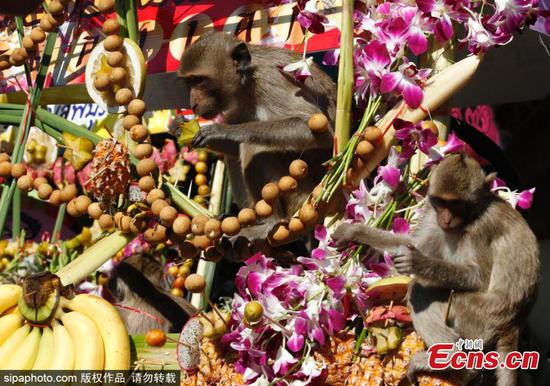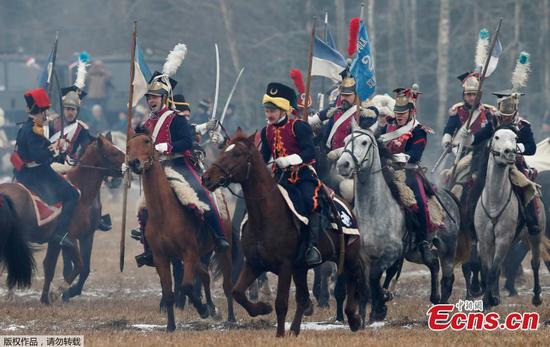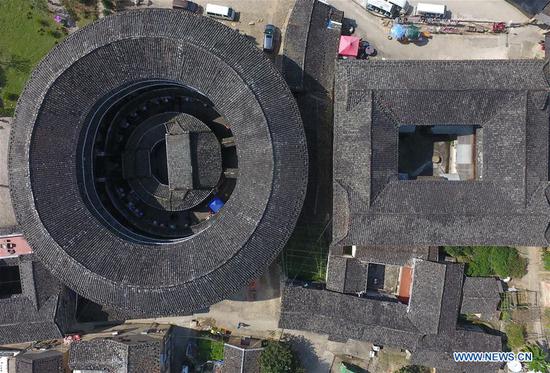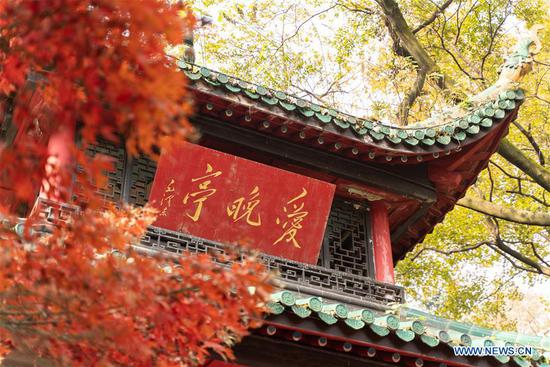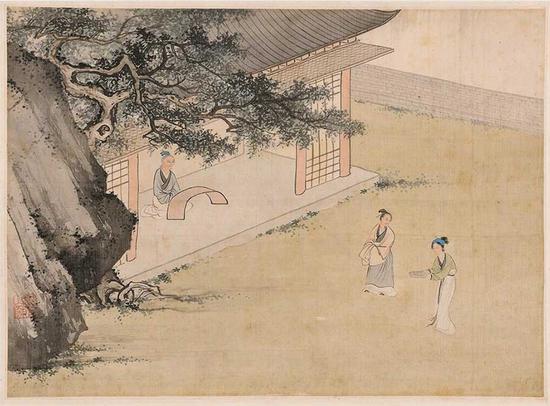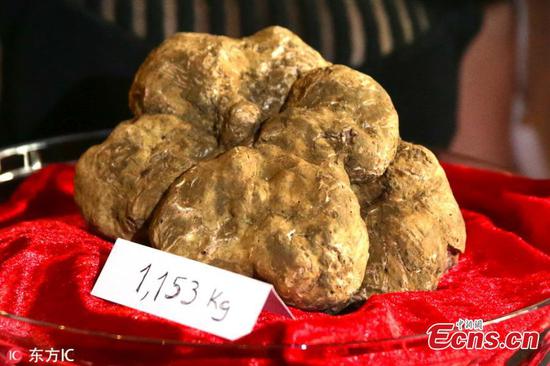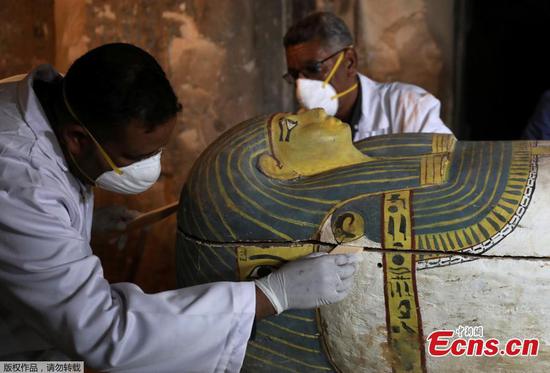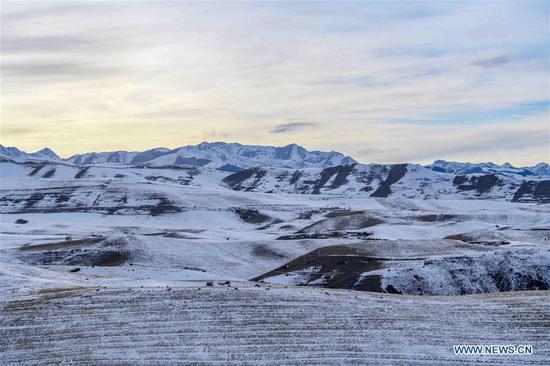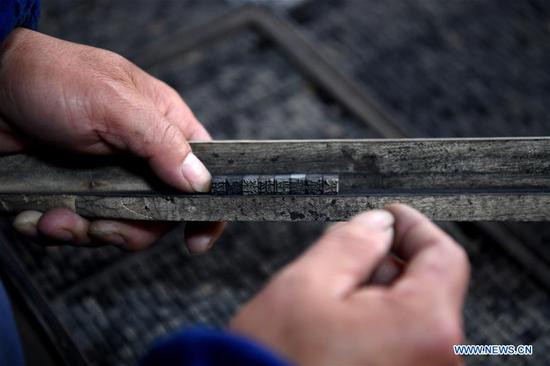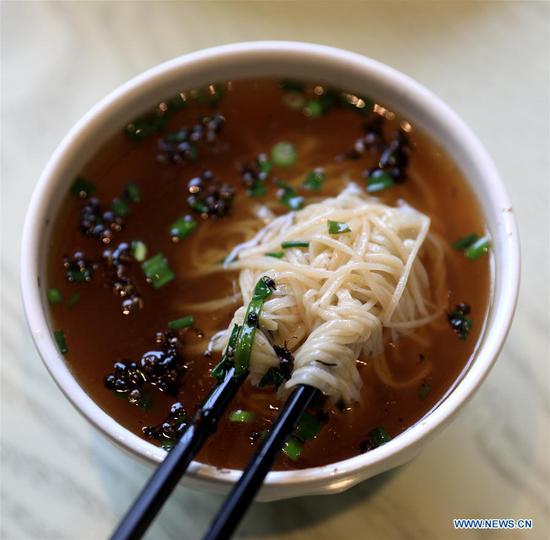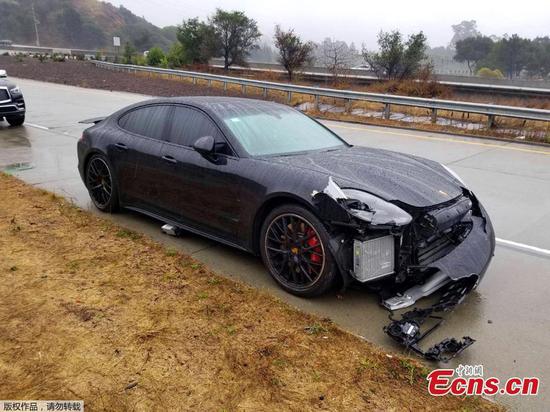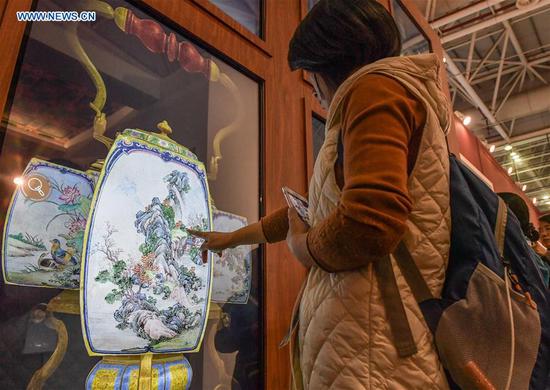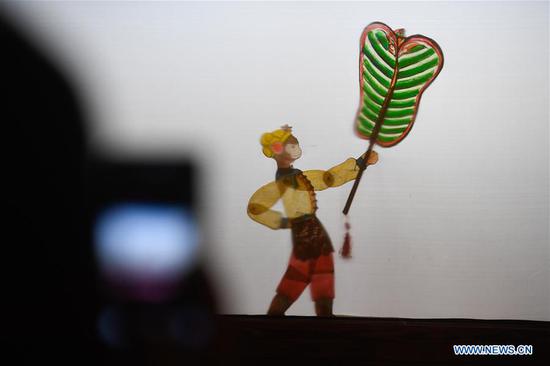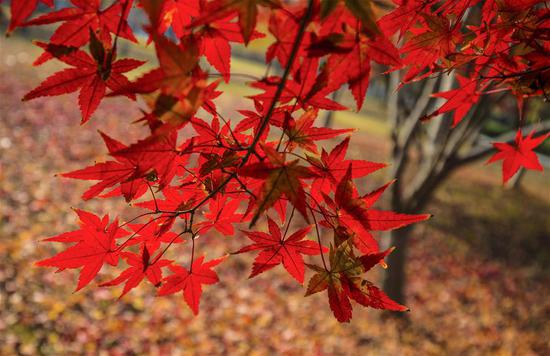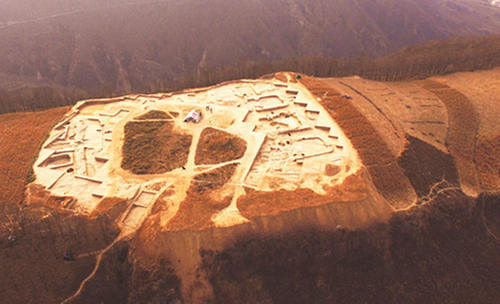
A cultural relic is found at the Lushanmao ruins in Baota District of Yan'an City, Northwest China's Shaanxi Province, identified as the site of a Chinese palace on Saturday. (Screenshot photo)
The head of a cultural relic excavation project in Baota district of Yan'an, Northwest China's Shaanxi Province, confirmed with the Global Times on Monday that he has traced the relic back 4,500 years ago, which could be China's most ancient palace.
The relic is also considered as the origin of the central axis symmetrical courtyard that was a style applied to ancient Chinese architecture, including the Forbidden City from the Ming Dynasty (1368-1644).
A staff member at the Yan'an Research Institute of Cultural Relics, told the Global Times that the cultural relic, discovered? at the Lushanmao ruins in Yan'an, was verified to be the earliest Chinese palace at an on-site meeting on Saturday.
"It is the most ancient central axis symmetrical courtyard around China up to now," Ma Mingzhi, director of the Prehistoric Archaeological Research Office of the Shaanxi Provincial Institute of Archeology and head of the excavation project, told the Global Times on Monday.?
He also noted that the three buildings discovered at the site are presented as Siheyuan, a historic type of courtyard surrounded by buildings on all four sides.
Ma said the relic dates back 4,400 to 4,500 years ago and linked the site to that term.
"It shows the transformation of Chinese settlements from the early to middle stages, forming different social classes during this time," Ma said.
Ma pointed it out that the social stratum division displayed by the relic is the essential element of civilization, which significantly reflects the evolution of Chinese prehistoric society.
Covering an area of 2 million square meters, the Lushanmao site, is one of the largest prehistoric settlements in China, the Xinhua News Agency reported in January.
Shaanxi provincial cultural heritage bureau announced in January that archaeologists discovered housing and cooking sites and city walls at the site.?
A large number of cultural items, including pottery, stoneware, boneware and jadeware were also unearthed at the site, Xinhua said.











